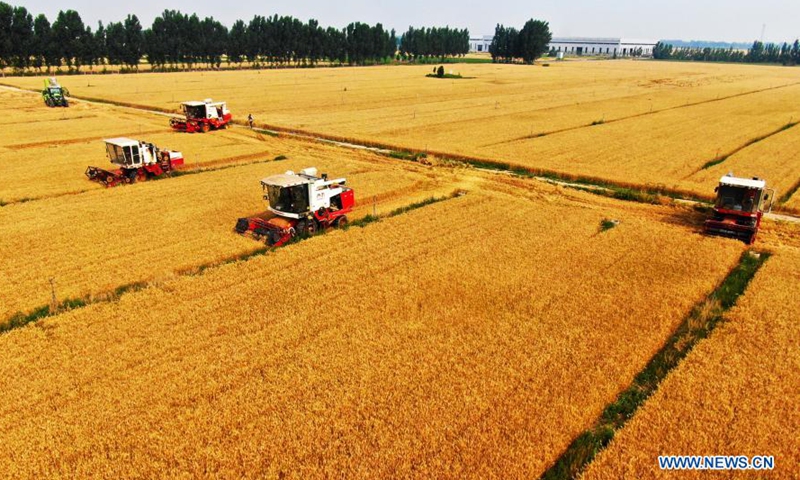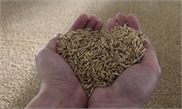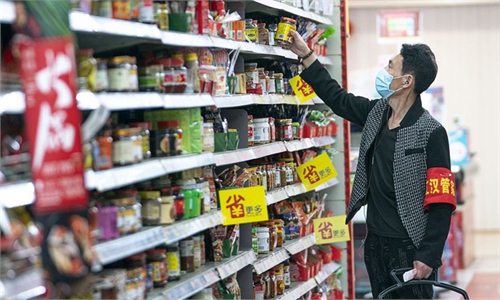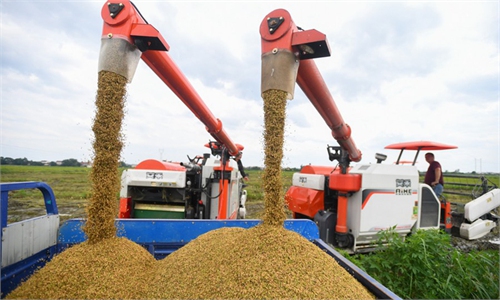
Aerial photo taken on June 12, 2020 shows farmers operating harvesters in wheat fields in Dafu Village, Xixindian Township, Botou City of north China's Hebei Province. China's grain output reached nearly 670 billion kg in 2020, up 5.65 billion kg, or 0.9 percent, from last year, the National Bureau of Statistics (NBS) said. This marks the sixth consecutive year that the country's total grain production has exceeded 650 billion kg. The bumper harvest comes despite disrupted farming as a result of the COVID-19 epidemic, which has been held in check thanks to efforts to ensure the transportation of agricultural materials and strengthen farming management.Photo:Xinhua
Chinese Premier Li Keqiang called for efforts to ensure national food security and sufficient supplies of major agricultural products at a teleconference on spring farming in Beijing on Tuesday.
Spring farming is gradually unfolding on a tight schedule. Urging unyielding efforts to ensure spring crop management and spring farming preparation, strengthen technical guidance and especially handle the task of guaranteeing supplies of agricultural materials and stabilizing their prices, the premier pledged to ramp up policy support for grain production, read a statement posted on the official website of the State Council, the cabinet.
He also pledged to keep annual grain output above 650 billion kilograms, push for a turnaround in the country's seed industry, stabilize hog production, and prevent and contain major animal diseases, plant diseases and insect pests, the statement said.
Among the key takeaways are efforts to ensure national food security and sufficient supplies of major agricultural products, so as to lay a sound foundation for the full-year economic and social development goals to be achieved.
The central government unveiled the "No. 1 document" for 2021 in late February, renewing its emphasis on the country's rural areas and agricultural development, while including more urgent issues such as tackling core bottlenecks in agricultural technologies, strengthening the domestic seed breeding system, and shoring up the poverty alleviation campaign in rural areas.
As the first policy statement released by China's central authorities each year, the document is seen as an indicator of policy priorities. Work on agriculture and rural areas has been high on the agenda for 18 consecutive years, according to the Xinhua News Agency.
Global Times



